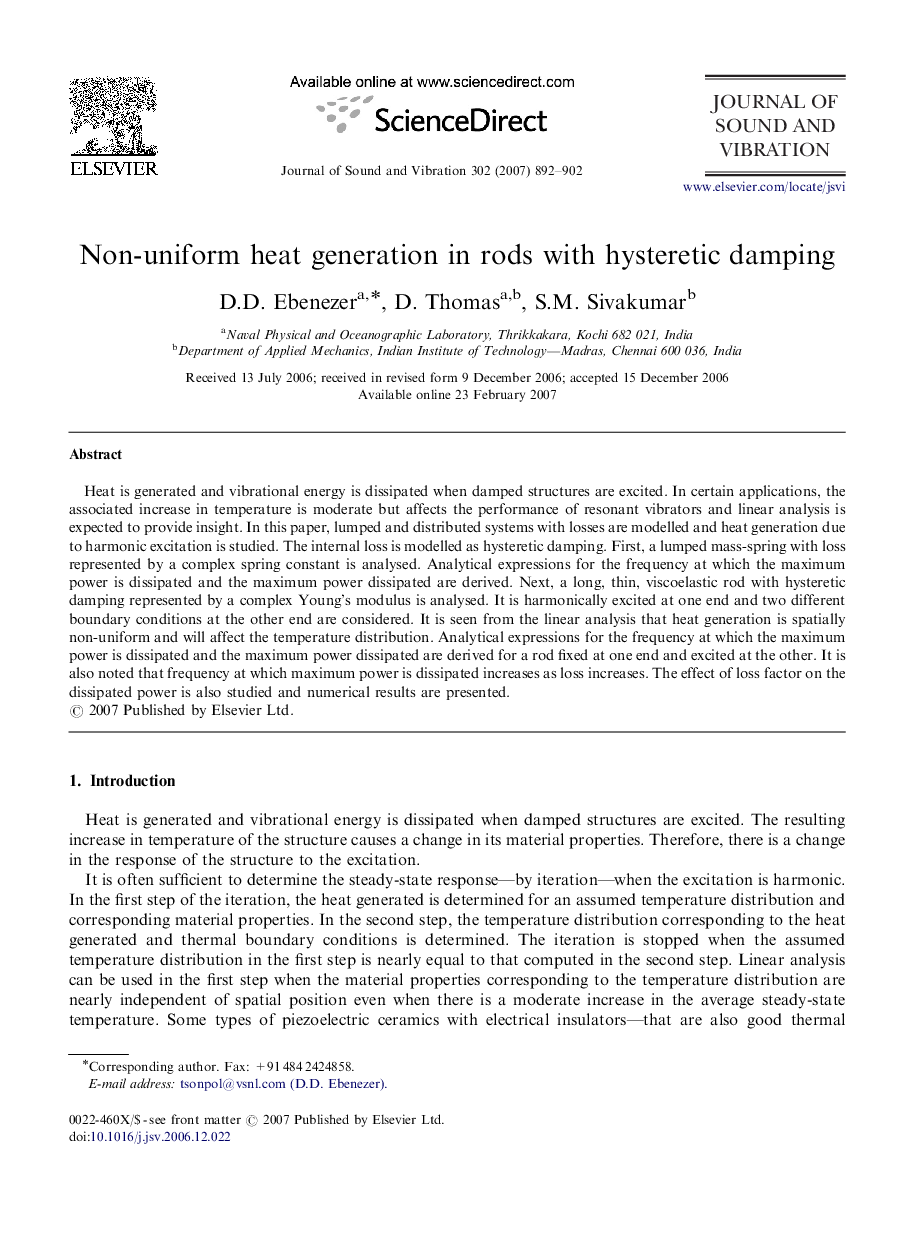| Article ID | Journal | Published Year | Pages | File Type |
|---|---|---|---|---|
| 290937 | Journal of Sound and Vibration | 2007 | 11 Pages |
Heat is generated and vibrational energy is dissipated when damped structures are excited. In certain applications, the associated increase in temperature is moderate but affects the performance of resonant vibrators and linear analysis is expected to provide insight. In this paper, lumped and distributed systems with losses are modelled and heat generation due to harmonic excitation is studied. The internal loss is modelled as hysteretic damping. First, a lumped mass-spring with loss represented by a complex spring constant is analysed. Analytical expressions for the frequency at which the maximum power is dissipated and the maximum power dissipated are derived. Next, a long, thin, viscoelastic rod with hysteretic damping represented by a complex Young's modulus is analysed. It is harmonically excited at one end and two different boundary conditions at the other end are considered. It is seen from the linear analysis that heat generation is spatially non-uniform and will affect the temperature distribution. Analytical expressions for the frequency at which the maximum power is dissipated and the maximum power dissipated are derived for a rod fixed at one end and excited at the other. It is also noted that frequency at which maximum power is dissipated increases as loss increases. The effect of loss factor on the dissipated power is also studied and numerical results are presented.
